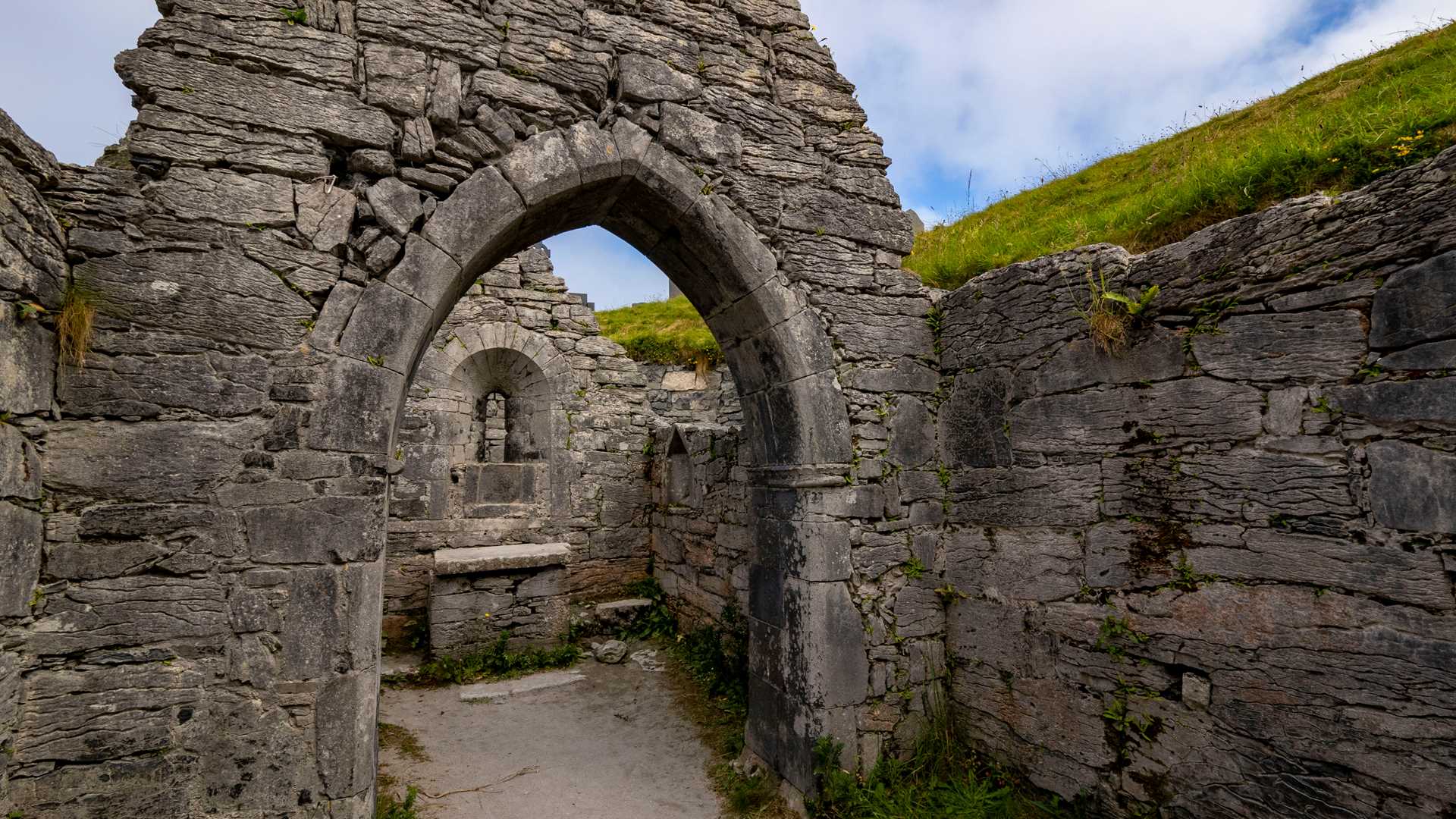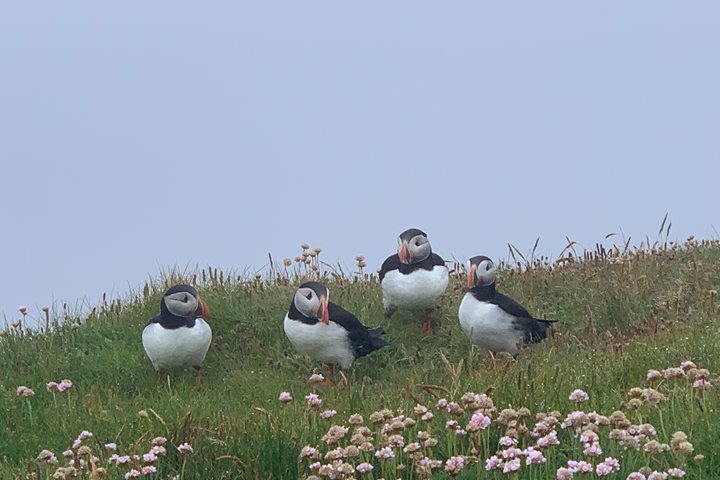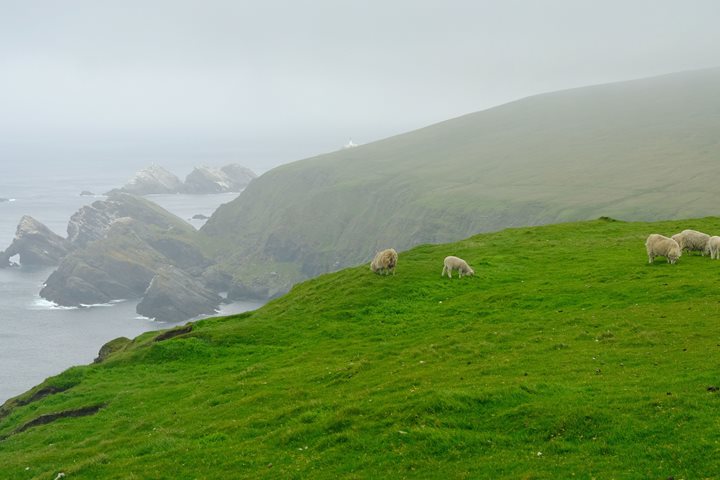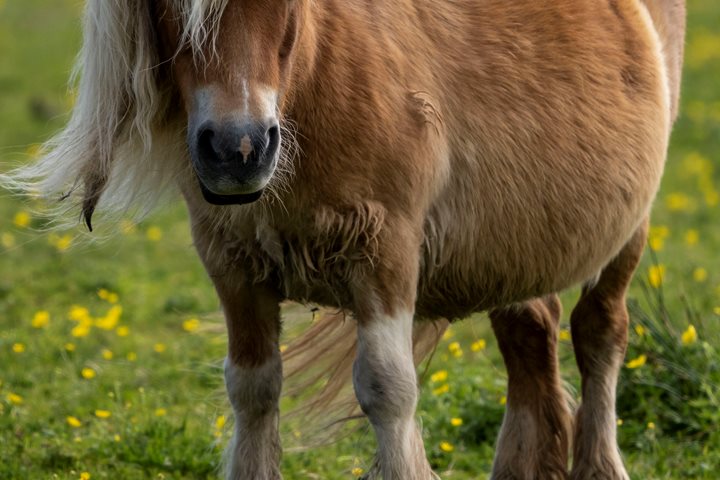On a limestone cliff 300 feet high above the Atlantic Ocean, we found a mighty prehistoric fortress, Dun Aengus, enclosed by massive drystone walls. Walking upwards on a rocky path, we were met with views of the extraordinary limestone pavement landscape around us and the chevaux de fries, sharp stones without numbers set on edge to prevent assaults on the inner rampart. Excavations have shown that from at least 900 BC, people were living in roundhouses within the fort, raising children, making fine bronze weapons, and coming together for occasional feasting. The island below is a maze of tiny green fields divided by neat drystone walls, painstakingly created by the islanders over many years. Although Inishmore is only eight miles long, there are thousands of miles of these drystone walls. We also visited an ancient church dedicated to St. Brecan and, in the harbour town of Kilronan, we enjoyed the opportunity to buy the famous Aran sweaters in their homeland.
The afternoon brought us to Inisheer, the ‘East Island,’ with a population of about 300 people, sandy beaches, turquoise waters, and a plethora of historical sites. Dominating the skyline is O’Brien’s Castle, a stark stone tower house built around 1400 AD. Long abandoned, the ruins of this castle speak of the turbulent years of the Middle Ages, when rival powers vied for control of the islands. Behind, another tower dated from the time of the Napoleonic Wars. The day was finished off with a ship cruise off the spectacular Cliffs of Moher, which rise 700 feet above sea level. Its sandstone ledges make perfect homes for nesting seabirds such as razorbills and guillemots.
Photo caption and photographer: St. Brecan’s Church, Inishmore. Photo by Steve Morello







